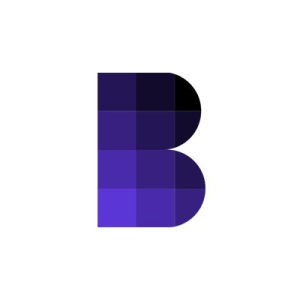Stratis Gaming: A Bold New Era for Play-to-Earn Blockchain
6 min read
BitcoinWorld Stratis Gaming: A Bold New Era for Play-to-Earn Blockchain In a move that has sent ripples across the blockchain and gaming communities, Stratis, a long-standing blockchain technology company, has announced a dramatic strategic pivot. The company is embarking on a significant rebranding effort, shifting its core focus squarely onto the burgeoning sectors of gaming and play-to-earn (P2E). This bold announcement, made via X by Stratis CEO Chris Trew, signals a profound commitment to harnessing blockchain’s power for immersive and rewarding gaming experiences. For those tracking the evolution of digital ownership and decentralized entertainment, this development marks a pivotal moment for Stratis gaming and the wider industry. Stratis Gaming : A Strategic Pivot Towards a New Horizon For years, Stratis has been known for its enterprise-grade blockchain solutions, particularly its unique position as a .NET and C# friendly platform. This focus allowed developers familiar with mainstream programming languages to build decentralized applications with relative ease. However, the crypto landscape is ever-evolving, and the opportunities within specific niches like gaming have grown exponentially. Stratis’s decision to rebrand and concentrate on gaming is not merely a cosmetic change; it represents a deep dive into one of the most promising applications of blockchain technology. The CEO’s promise of more detailed information soon suggests a comprehensive strategy is being finalized, likely encompassing new tools, partnerships, and initiatives tailored specifically for game developers and players. This shift is strategically sound given the explosive growth of the gaming industry and the increasing demand for true digital ownership and value exchange within virtual worlds. Stratis aims to position itself at the forefront of this revolution, offering a robust and developer-friendly blockchain infrastructure for the next generation of games. Unpacking the Play-to-Earn Revolution: Why Now? The Play-to-Earn (P2E) model has emerged as a disruptive force, challenging traditional gaming paradigms. Unlike conventional games where players spend money to play and own nothing, P2E empowers players with actual ownership of in-game assets, characters, and even virtual land, often represented as Non-Fungible Tokens (NFTs). Key aspects driving the P2E revolution include: True Ownership: Players genuinely own their digital assets, which can be traded, sold, or used across different games and platforms. Economic Opportunities: Beyond entertainment, P2E offers avenues for players to earn cryptocurrency or valuable NFTs through gameplay, contributing to a new digital economy. Community Governance: Many P2E games incorporate decentralized autonomous organizations (DAOs), giving players a say in the game’s development and future. New Revenue Streams for Developers: P2E enables novel monetization strategies through asset sales, royalties, and tokenomics, fostering innovation. Stratis’s entry into this space indicates a belief in the longevity and transformative potential of P2E. By focusing on this model, Stratis aims to attract developers looking to build games where players are not just consumers but active participants and stakeholders. The Dawn of Blockchain Gaming : What Advantages Does Stratis Bring? The realm of blockchain gaming is still relatively nascent but is rapidly maturing. Stratis, with its established blockchain infrastructure, could offer several distinct advantages: Developer Familiarity: Stratis’s long-standing support for .NET and C# could be a significant draw for game developers. A vast pool of developers are proficient in these languages, potentially lowering the barrier to entry for creating blockchain games compared to learning new blockchain-specific languages. Established Technology: Unlike newer, unproven chains, Stratis has a history of operation, offering a degree of stability and reliability that is crucial for complex applications like games. Focus on Scalability: For gaming, high transaction throughput and low latency are paramount. While details are awaited, Stratis will likely prioritize solutions for these challenges, potentially leveraging sidechains or other scaling technologies to ensure a smooth gaming experience. Integration Potential: Stratis could facilitate easier integration of NFTs, in-game tokens, and decentralized marketplaces directly into game engines, simplifying the development process for studios. By leveraging its existing technological foundation and adapting it to the specific needs of gaming, Stratis aims to provide a robust and accessible platform for the next generation of decentralized games. This targeted approach could accelerate the mainstream adoption of blockchain-powered entertainment. Navigating the Landscape of Crypto Gaming : Challenges and Opportunities While the opportunities in crypto gaming are immense, the path is not without its hurdles. Stratis, in its renewed focus, will undoubtedly need to address these challenges to ensure success and widespread adoption: Sustainability of Tokenomics: Many early P2E games struggled with unsustainable economic models. Stratis will need to guide developers in creating balanced tokenomics that reward players without leading to inflation or asset depreciation. User Experience and Onboarding: For mass adoption, crypto gaming needs to become as seamless as traditional gaming. Simplifying wallet creation, transaction processes, and overall user onboarding will be crucial. Game Quality: Early blockchain games often prioritized blockchain mechanics over engaging gameplay. Stratis must foster an environment where developers can create high-quality, fun games that happen to use blockchain, rather than blockchain games that are merely functional. Regulatory Uncertainty: The regulatory landscape for crypto and NFTs is still evolving. Stratis will need to navigate these complexities and provide clarity and compliance tools for developers building on its platform. Scalability and Network Congestion: High player counts can quickly overwhelm a blockchain. Stratis’s technical roadmap will need to address how it plans to handle the immense transaction volume generated by popular games. Despite these challenges, the sheer size of the global gaming market presents an unparalleled opportunity. Stratis’s focused approach could enable it to capture a significant share of this emerging sector by providing tailored solutions. The Future of Web3 Gaming : What’s Next for Stratis? The rebranding of Stratis signifies a clear intent to become a key player in the expansive world of Web3 gaming . This involves more than just P2E; it encompasses the broader vision of decentralized applications, digital ownership, and community-driven ecosystems within virtual worlds. As CEO Chris Trew indicated, more information is on the way, and the community eagerly awaits the specifics of this ambitious roadmap. What should investors, developers, and gamers look out for? New Brand Identity: Expect a fresh look and feel that reflects the gaming focus. Technological Enhancements: Details on specific gaming SDKs, API integrations, and scaling solutions. Partnerships: Announcements of collaborations with game studios, developers, or other blockchain projects. Ecosystem Development: Initiatives to support game development, grants, hackathons, and community building. Token Utility: How the STRAT token will play a central role in this new gaming ecosystem, potentially through staking, governance, or in-game utility. This strategic pivot is a high-stakes move for Stratis, but one that aligns with the significant shifts occurring in both the technology and entertainment industries. If executed effectively, it could position Stratis as a formidable force in the future of digital entertainment. Conclusion Stratis’s bold rebrand towards gaming and play-to-earn marks a significant chapter in its journey and for the broader blockchain ecosystem. By sharpening its focus on a sector ripe for innovation, Stratis aims to leverage its existing technological strengths to cater to the unique demands of game developers and players. While challenges in scalability, user experience, and tokenomics remain, the immense potential of true digital ownership and economic empowerment within games presents a compelling opportunity. As the company prepares to unveil more details, the crypto and gaming communities will be watching closely to see how Stratis will shape the future of decentralized entertainment and cement its position in the exciting new world of blockchain-powered gaming. To learn more about the latest crypto market trends, explore our article on key developments shaping blockchain gaming price action. This post Stratis Gaming: A Bold New Era for Play-to-Earn Blockchain first appeared on BitcoinWorld and is written by Editorial Team

Source: Bitcoin World



